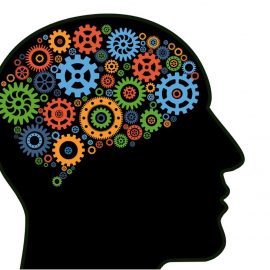
What are the different types of memory? How does your brain process different kinds of information? What happens in your mind between experiencing something and remembering it later?
In her book Remember, Lisa Genova explores the fascinating world of memory systems and how they work together. From the brief flicker of working memory to the lasting impression of muscle memory, our brains have distinct ways of processing and storing information.
Read on to learn about the different types of memory and discover how they shape our daily experiences.
Different Types of Memory
Genova explains that memory is a process that involves encoding, consolidating, storing, and retrieving information. So, what are the different types of memory? Genova describes several kinds.
Working Memory
Working memory refers to the brain’s system for holding information in consciousness for brief periods of time. It operates in the prefrontal cortex (the front part of the brain) and can only hold a few pieces of information for 15-30 seconds. Most of it is then forgotten, but some memories transition from working memory into long-term memory, something you store in your brain for an indefinite, extended period.
Episodic Memory
Episodic memory refers to your memories of things that have happened. These include experiences like important life events and specific memories of things that have happened to you. Semantic memory, on the other hand, is fact-based knowledge not linked to a specific personal experience. This includes things like your vocabulary (remembering what words mean and how to use them) and general knowledge.
Prospective Memory
Genova also describes prospective memory, which is your memory of things you intend to do in the future. For example, if you plan to call your doctor at a certain time, remembering to do this when the time comes requires you to use your prospective memory. Episodic, semantic, and prospective memory are all types of declarative memory, or memories that you can consciously retrieve at will.
Muscle Memory
Finally, Genova discusses muscle memory, which she describes as the ability to remember how to do something. Like episodic memory and semantic memory, it’s a type of long-term memory. But, unlike the previous three we’ve discussed, muscle memory isn’t a type of declarative memory. Instead, you activate it unconsciously when you do something you’ve done many times before. For example, you don’t have to re-learn how to type every time you sit down in front of the computer: Your brain retains the information of how to move your body to achieve the desired result. Despite the name, muscle memory isn’t stored in your muscles, but in your brain.
| Other Types of Memory There are other types of memory that Genova doesn’t cover, many of which relate to the types she describes. Sensory Memory Before information moves into your working memory, it first enters your sensory memory. This is an extremely brief (a second or two) memory of a sensory stimulus you’ve just experienced. Examples of sensory memory include when you finish listening to a song and the melody lingers in your head for a moment or when you continue to smell a scent even after leaving the area where the scent is. Sensory memories either disappear after a couple of seconds or move on to short-term memory, which we’ll explain next. Short-Term Memory The definition Genova gives of “working memory” aligns with the term “short-term memory.” While people often use the terms interchangeably, there are some differences: Working memory is a subtype of short-term memory. While short-term memory refers to the information held in the brain for a short period of time (15-30 seconds, as Genova says), working memory is unique in that it allows you to manipulate the information you’re holding in your short-term memory. So while you may use your short-term memory to remember a sequence of letters, for example, you would engage your working memory to manipulate that sequence—such as rearranging them into a new order. Intermediate (Medium-Term) Memory Additionally, while Genova addresses working memory and long-term memory (which holds information for extended periods like years or decades), there’s a stage between these two: intermediate or medium-term memory. This refers to the things we remember for a few hours before they’re converted into long-term memories. Procedural Memory Genova also doesn’t discuss procedural memory, which is the memory of skills that, once learned, require little conscious effort to carry out. Muscle memory is a type of procedural memory. But, whereas muscle memory refers specifically to the aspects of motor control required to perform a skill, procedural memory refers to all aspects of the process of performing a skill. Internal Memory Finally, all of the types of memory Genova describes are types of internal memory. In Moonwalking With Einstein, Joshua Foer explains that internal memories are those stored in the brain, whereas external memories are those stored via external aids like books, calendars, notes, and other reminders. He suggests that, in modern society, people tend to rely more on external memories than internal memories. He also suggests that advancing technology may one day allow us to integrate our internal and external memories so that they’re seamlessly connected. |
Exercise
Think about the different types of memory Genova describes (working memory, episodic memory, semantic memory, prospective memory, and muscle memory). Which type of memory do you most often struggle with, and in what situations does this typically occur? For example, perhaps you frequently forget appointments (prospective memory) or have trouble remembering people’s names after meeting them (semantic memory).






